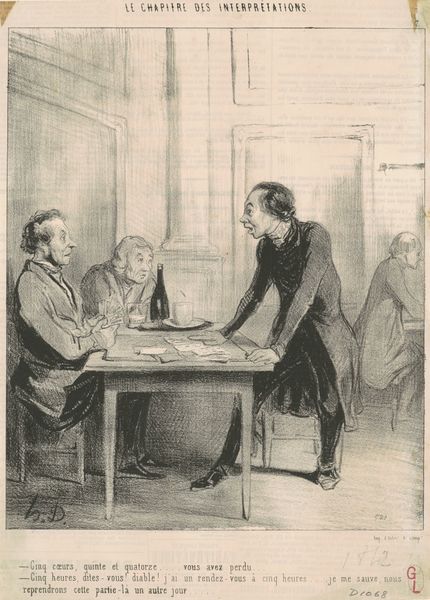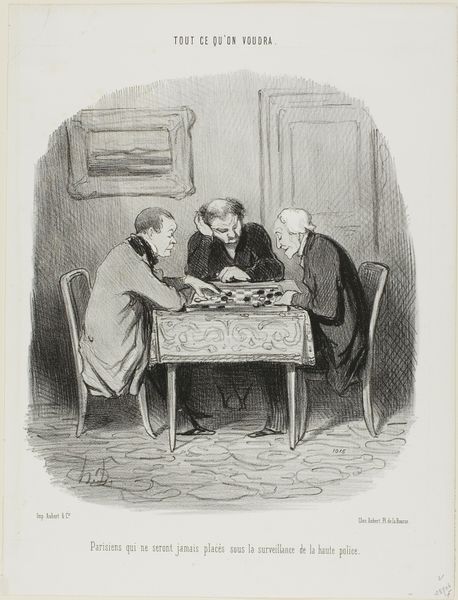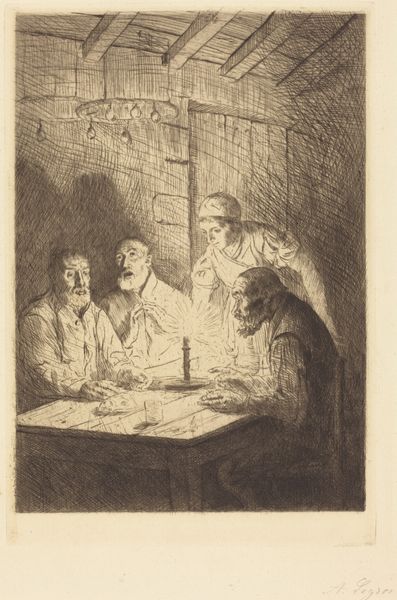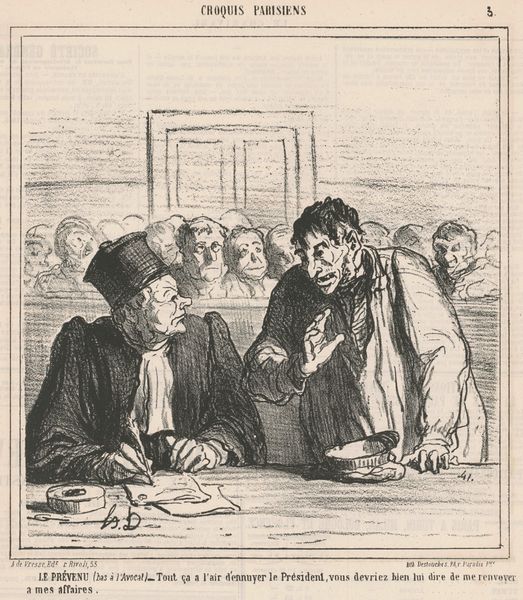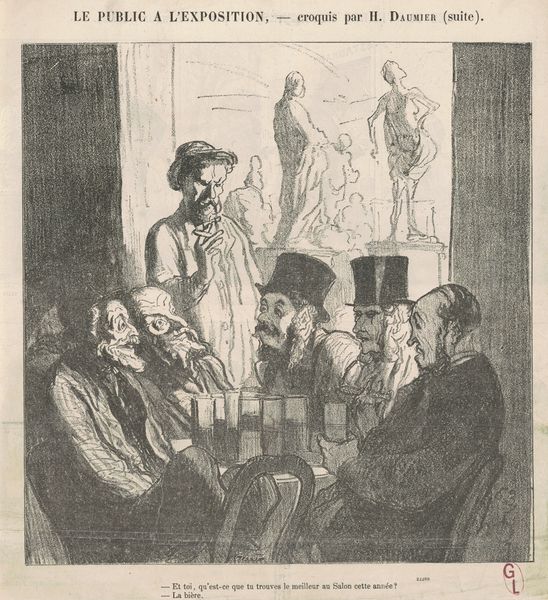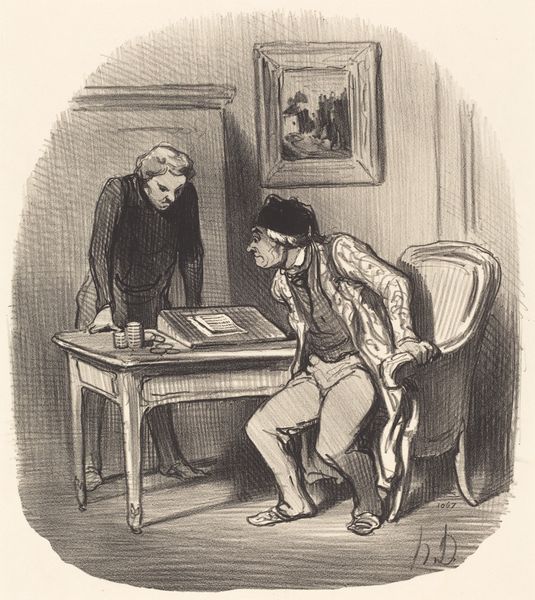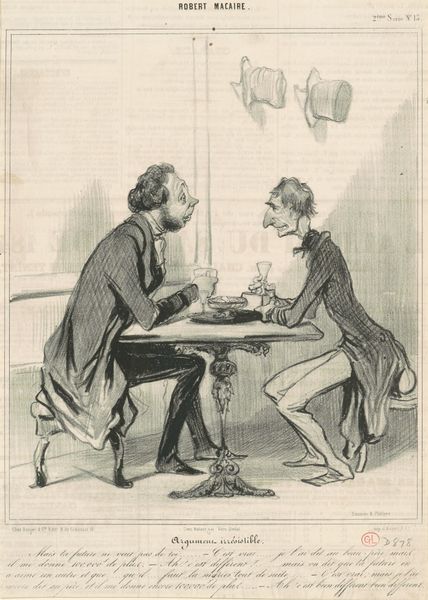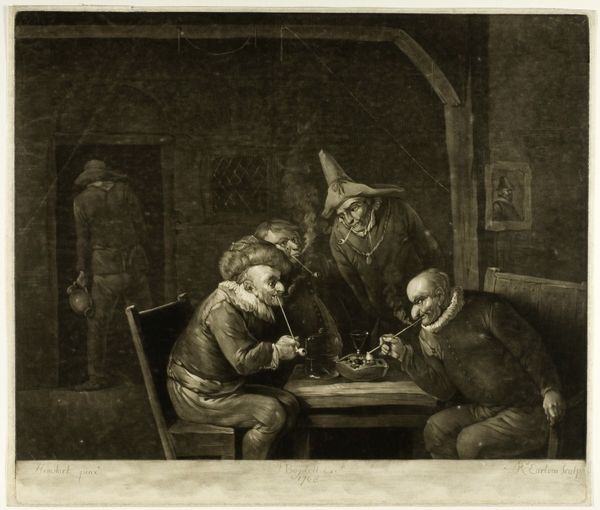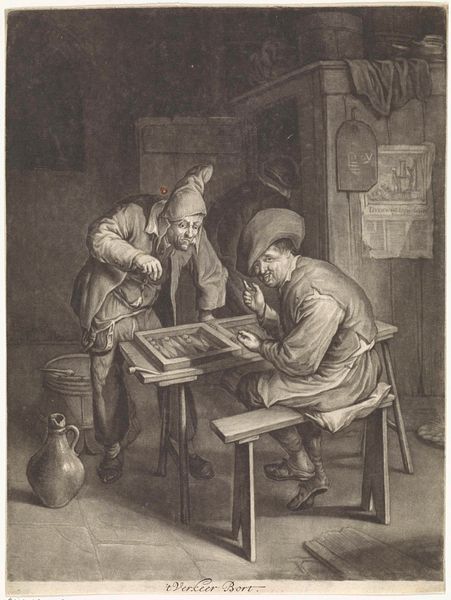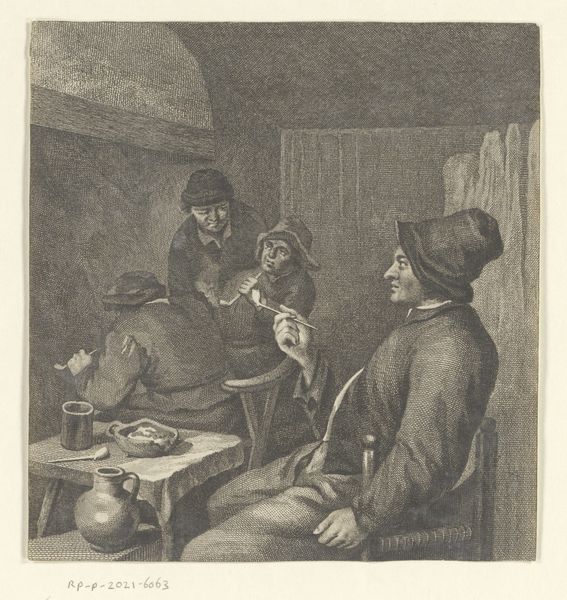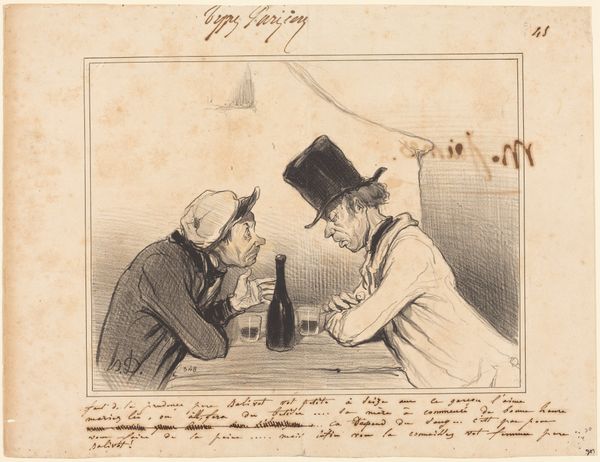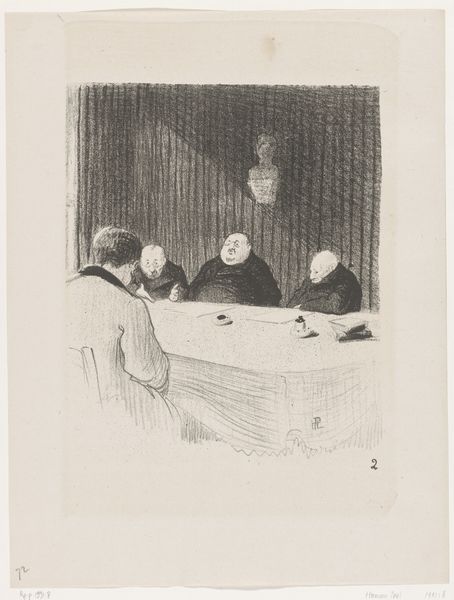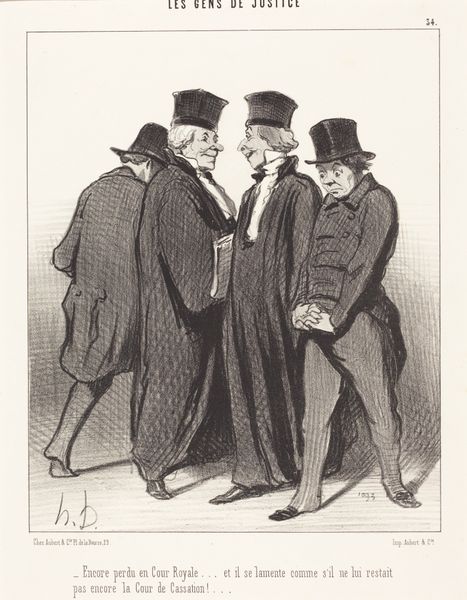
drawing, lithograph, print, pen
#
portrait
#
pencil drawn
#
drawing
#
lithograph
# print
#
caricature
#
pencil sketch
#
pencil drawing
#
romanticism
#
pen
#
portrait drawing
#
pencil work
#
genre-painting
Copyright: National Gallery of Art: CC0 1.0
Editor: Here we have Honoré Daumier's "Quand le crime ne donne pas," a lithograph from 1848. The scene depicts three figures seated at a table, apparently playing dominoes, and there is something quite somber and still in the mood here, despite the mundane activity. What are your initial thoughts about this work? Curator: Let’s look closely at the process itself. Daumier chose lithography, a printmaking technique, allowing for wider dissemination of his commentary. Considering the social context of 1848, a year of revolutions, doesn't this suggest the artist was deliberately aiming for a broad audience to consider his message? How might the choice of a 'low' art form democratize this satire? Editor: That's a really interesting point, especially thinking about the medium itself contributing to its accessibility! So the choice to use prints would mean making it accessible. But accessible to who? And why are they playing dominoes? Curator: Indeed. Who consumes this imagery is as vital as who produces it. Now consider the subject - what roles do they occupy? They wear legal gowns, their focus consumed with dominoes, rather than seeking justice. Could Daumier be critiquing not only the judicial system but the bourgeoisie which upheld it? The lithograph becomes a tool to critique power and question the very foundations of society at the time through its circulation and reception. What do you make of Daumier making political commentary? Editor: Wow, that connection really opens up the whole image. Seeing it as a statement about class and society... That really changes how I view the work. Curator: Exactly. Examining art through the lens of material and production reveals its entanglement within larger social and economic structures. Next time, ask: who made it, how did they make it, and for whom was it made. What relationships does this encourage us to discover?
Comments
No comments
Be the first to comment and join the conversation on the ultimate creative platform.
